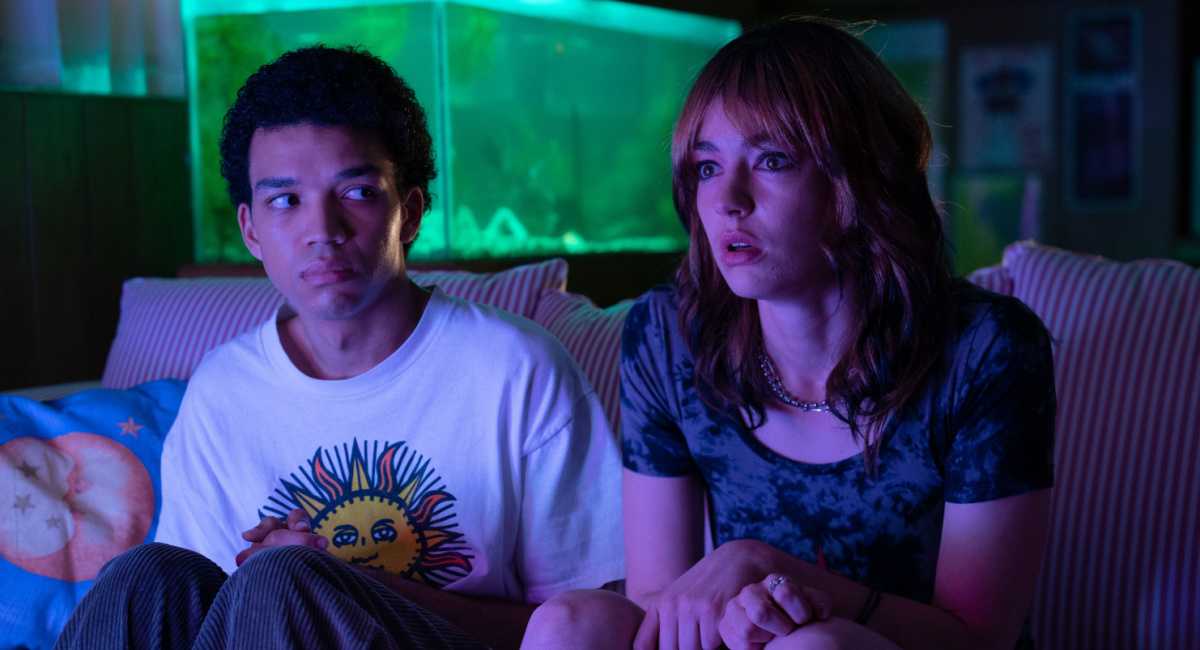(Left) Justice Smith in ‘I Saw the TV Glow’. Photo: A24.
Opening in theaters on May third is ‘I Saw the TV Glow,’ directed by Jane Schoenbrun and starring Justice Smith, Brigette Lundy-Paine, Helena Howard, Fred Durst, Danielle Deadwyler, Lindsey Jordan, and Amber Benson.
Related Article: Justice Smith and An-Li Bogan Talk ‘The American Society of Magical Negroes’
Initial Thoughts
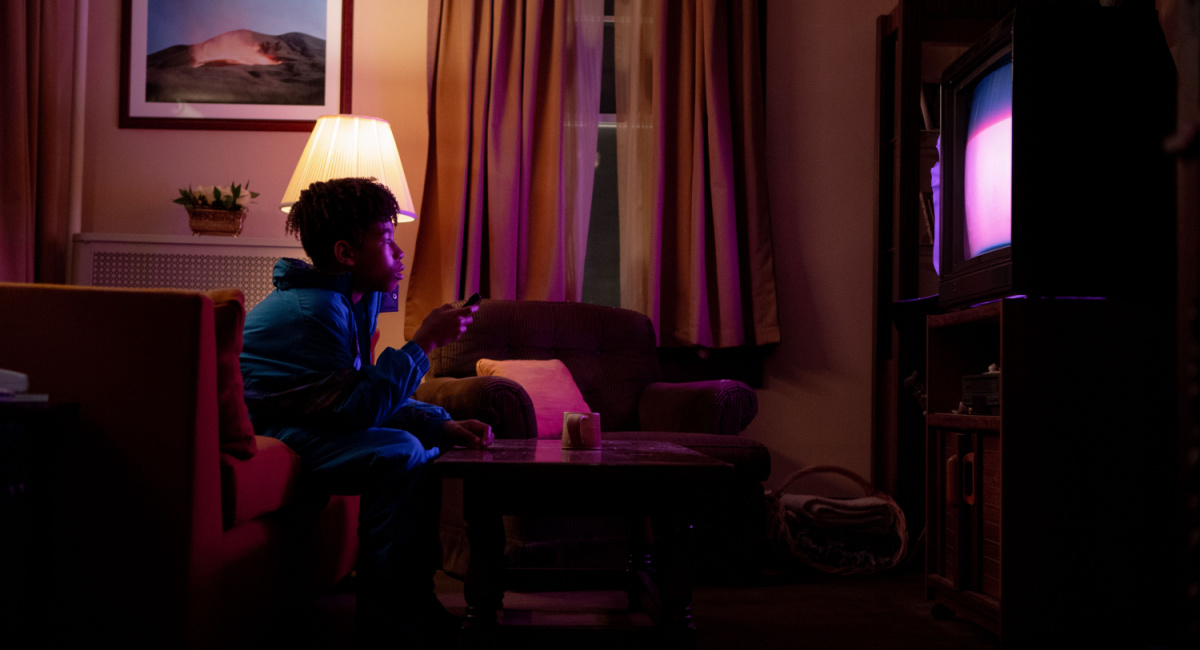
‘I Saw the TV Glow’. Photo: A24.
Horror, reality-bending fantasy, and an entire lot of ‘90s nostalgia come collectively in ‘I Saw the TV Glow,’ the second full-length function movie written and directed by Jane Schoenbrun, who made their debut in 2021 with the creepy, pandemic-infused ‘We’re All Going to the World’s Fair.’ This time out, Schoenbrun takes their cues from David Lynch, ‘Donnie Darko,’ and bizarre ‘90s children tv to inform a narrative of suburban apathy and gender dysphoria that’s each haunting and poignant, even when it might appear obscure to some viewers.
Story and Direction
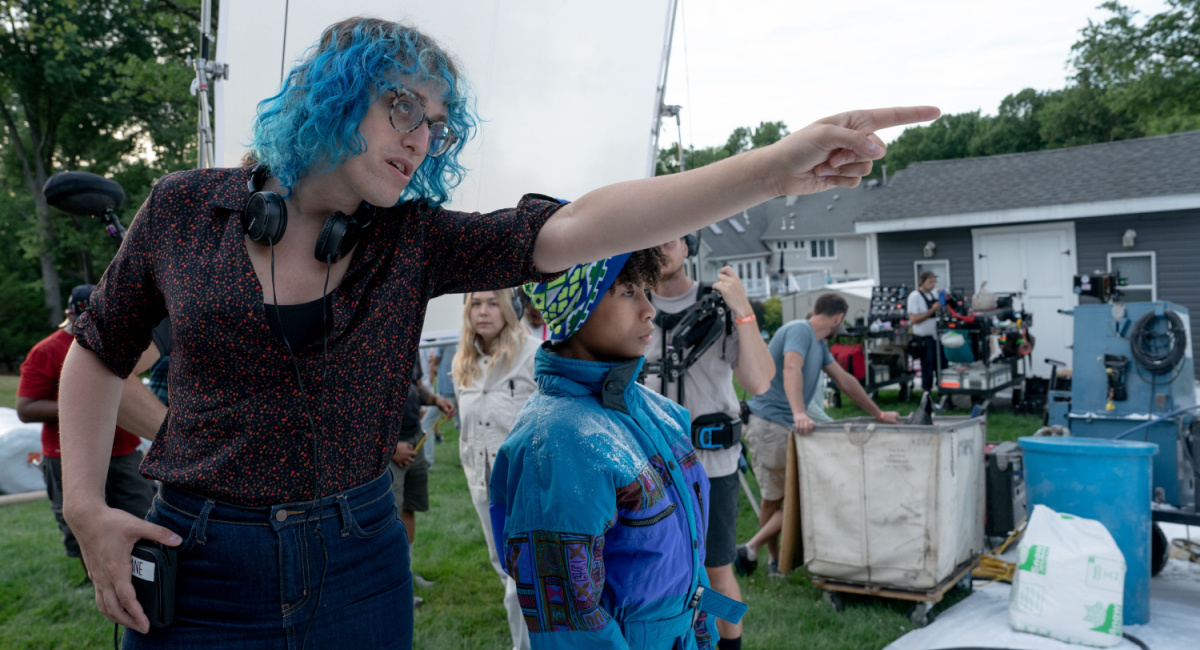
Director Jane Schoenbrun on the set of ‘I Saw the TV Glow’. Photo: A24.
In a colorless, unnamed suburb that already looks as if an alternate universe the place everyone seems to be half-dead, Owen (performed as a younger boy by Ian Foreman and as a teen by Justice Smith) bonds with an older teen named Maddy (Brigette Lundy-Paine) over their shared curiosity in a children’ TV present known as ‘The Pink Opaque.’ Owen’s fascination derives from seeing commercials for the present, since his dad and mom say it’s on too late for him to look at (“Isn’t {that a} present for ladies?” sneers his father, performed by Limp Bizkit frontman Fred Durst with a distant, icy menace).
Maddy, nonetheless, is hooked, toting round an episode information like her personal private Bible and ultimately having Owen sneak over to look at it along with her below the pretense of him going to a buddy’s home for a sleepover (she later passes him VHS tapes of those he misses). The present itself appears like so most of the low cost, tacky, lo-fi “younger grownup” packages (and later, extra subtle ones like ‘Buffy’) that proliferated within the ‘90s on Nickelodeon and different primary cable channels, centering round two women, Isabel (Helena Howard) and Tara (Lindsey Jordan), who meet at summer season camp and share a psychic hyperlink that permits them to battle every kind of monsters – and an overarching huge unhealthy known as Mr. Melancholy – with out even assembly up once more.
It’s quickly clear that Isabel and Tara are embodiments of a special existence for Owen and Maddy, and that the TV characters’ embrace of their powers and true selves is one thing that the real-life buddies each yearn for. But solely Maddy takes motion, abruptly disappearing from city simply as ‘The Pink Opaque’ is canceled. When she ultimately resurfaces to a shocked older Owen, she tells him that the world of ‘The Pink Opaque’ is definitely actual – and that the fact they inhabit often is the fictional one.
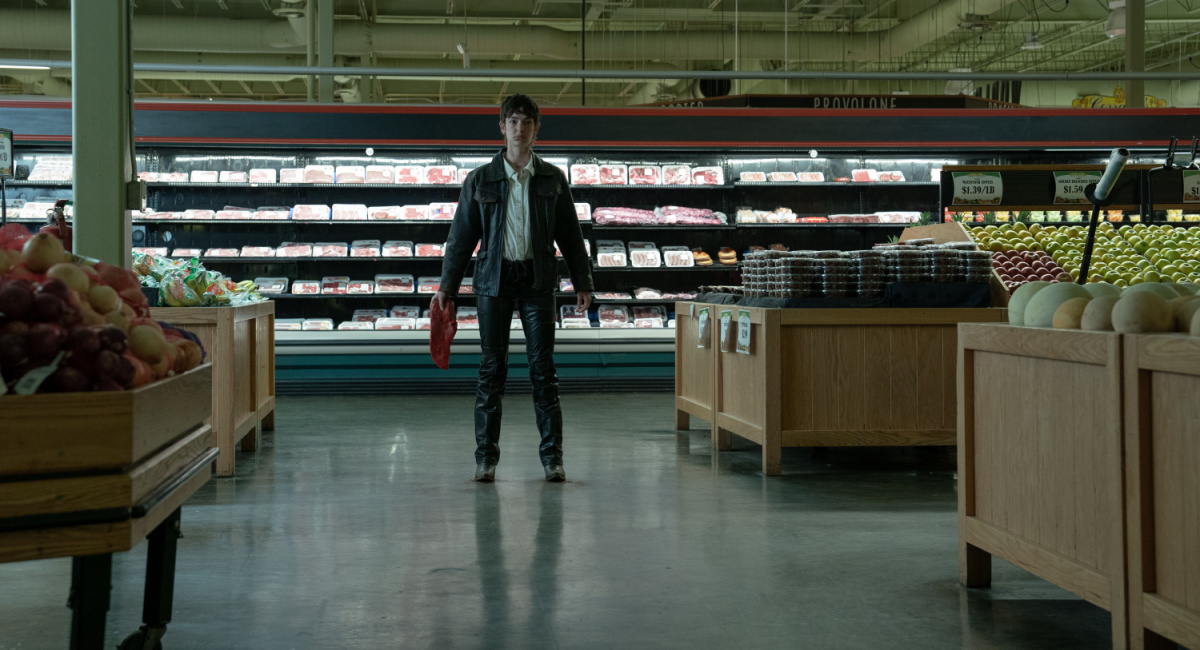
‘I Saw the TV Glow’. Photo: A24.
Has Maddy gone mad? What is the reality? Owen doesn’t know for positive, however he does sense that one thing is improper, and that there’s a model of him that doesn’t need to slide down the identical suburban path to dissolution that he sees throughout him. As Owen’s world begins to shift and alter, Schoenbrun permits the movie to mutate with it: typically Owen addresses the viewers straight, whereas the strains between his actuality and one other appear to cross, merge, and blur in a hallucinogenic whirl of images that glints out and in of the ‘Pink Opaque.’
Schoenbrun directs all this as if they’re each inside Owen’s world and out of doors of it, coolly observing his twisting journey with detachment whereas additionally permitting us to really feel the rawness of his feelings and the fear he feels as he’s actually pulled in two instructions. The director additionally captures the bittersweet tang of reminiscence, particularly in a later scene the place an older, defeated Owen finds a rerun of ‘The Pink Opaque’ on late-night TV and instantly sees it for the amateurish, chintzy manufacturing it truly is —though his childhood reminiscence of it was magical.
Much of the ultimate act of the movie performs out within the arid Fun Center – which is something however – the place Owen works. It’s there that a part of Schoenbrun’s theme, that suburbia is a draining hellspace of alienation, comes on most closely, however the director doesn’t appear to have a lot to say about it that’s new. The different a part of the director’s thesis, nonetheless, is way more private and will get misplaced on viewers who don’t have the identical lived expertise.
Self-Realization
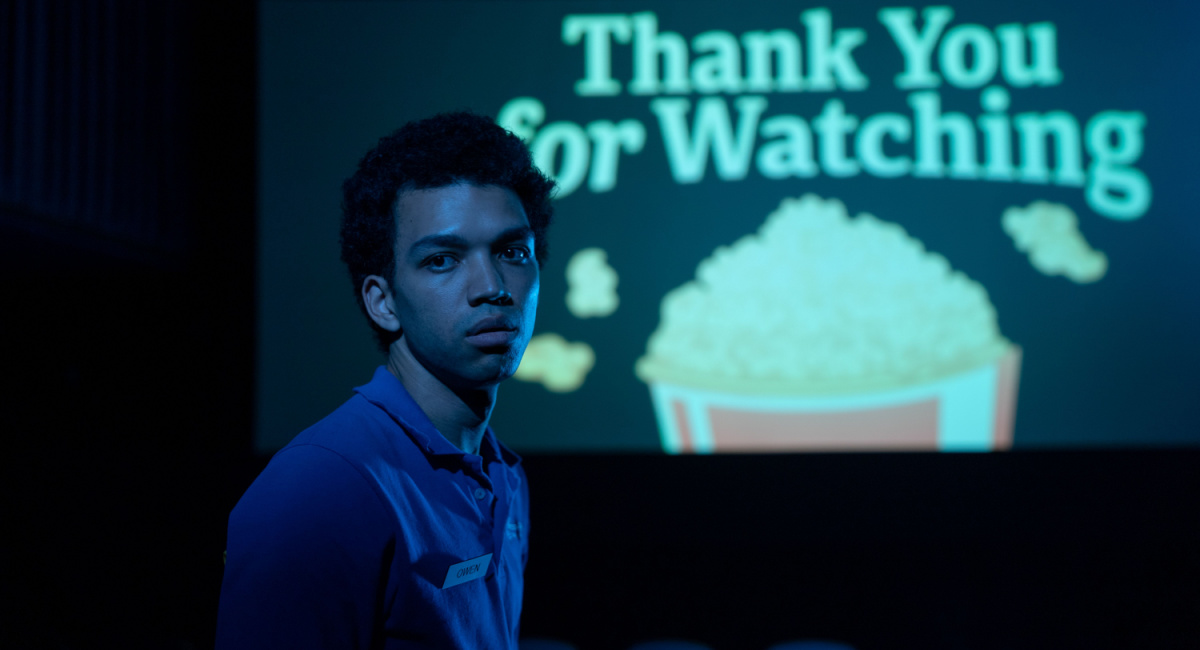
Justice Smith in ‘I Saw the TV Glow’. Photo: A24.
‘I Saw the TV Glow’ is an allegory in regards to the “egg crack,” the second during which a trans individual instantly and clearly sees that who they’re inside might now not match up with what the world sees on the skin. Schoenbrun’s personal private journey as a trans individual is embedded into the movie, whereas Owen and Maddy are two people who find themselves going by the identical factor – represented by the way in which during which they relate to the characters of Isabel and Tara on ‘The Pink Opaque.’
One of them, Maddy, is changing into extra comfy with who she is already, embracing the concept that she will step into one other world and stay truthfully. A confused and determined Owen, in the meantime, sees the reality inside his grasp however can’t fairly pry himself away from the standard story that he feels he has to stay. “Do you want women?” Maddy quizzes him at one level, after letting him know the place she stands. “I don’t know,” says Owen haltingly. When Maddy asks if he prefers boys, Owen replies, “I believe I like TV reveals…When I take into consideration that stuff, I really feel like somebody took a shovel and dug out my insides.”
Smith (‘Jurassic World: Dominion’) and Lundy-Paine (‘Bill & Ted Face the Music’) give these conflicted characters actual heat and depth. Lundy-Paine provides Maddy an preliminary guardedness that turns into steely willpower and ultimately an otherworldly aura, whereas Smith is achingly unhappy and in addition affectingly candy because the tormented Owen, successfully speaking by each his physicality and make-up how Owen appears to fold into himself because the years go by, resulting in a wrenching finale.
Final Thoughts
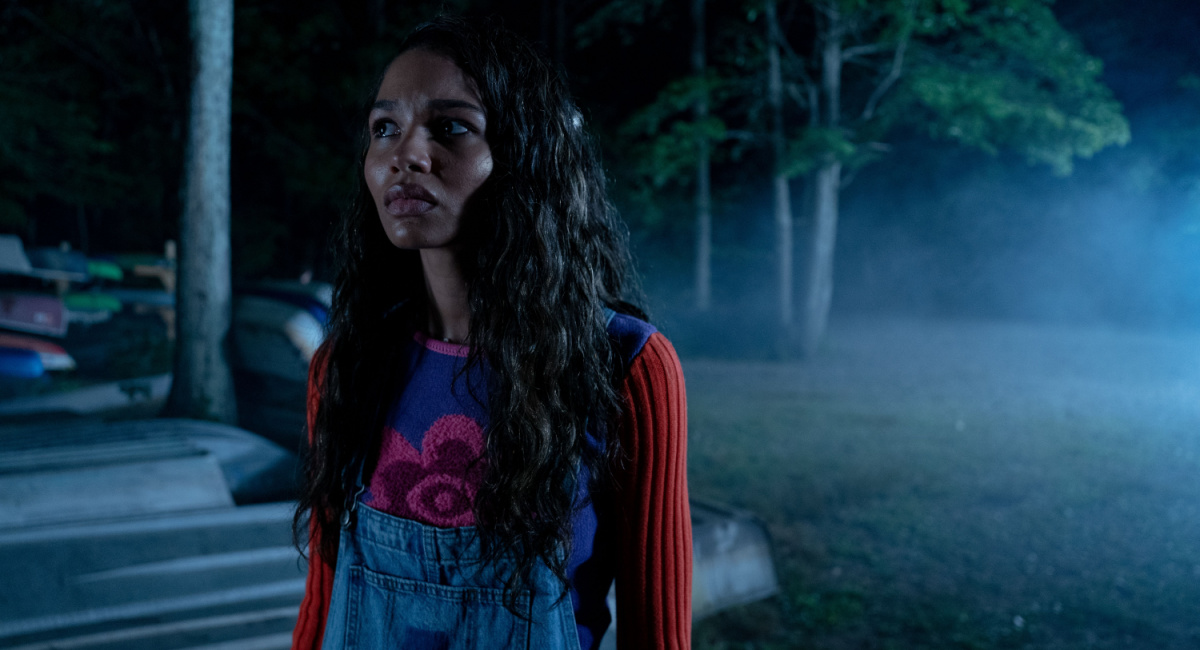
‘I Saw the TV Glow’. Photo: A24.
In some ways, ‘I Saw the TV Glow’ is impartial filmmaking within the truest sense, a movie that may be very a lot a deeply private imaginative and prescient filtered by an experimental narrative and dream-like visible imagery. If a few of its concepts are considerably shopworn – we’ve been instructed many times by many movies how soul-deadening suburbia could be – different ideas, like discovering one’s true self, are related proper this minute as trans and LGBTQ+ individuals are more and more below hearth for expressing simply that. Even with out that subtext, Jane Schoenbrun’s fever dream is compelling, incessantly unnerving viewing that can strike totally different chords with everybody who sees it.
‘I Saw the TV Glow’ receives 7.5 out of 10 stars.

“Look just a little nearer.”
Teenager Owen is simply attempting to make it by life within the suburbs when his classmate introduces him to a mysterious late-night TV present — a imaginative and prescient of a supernatural… Read the Plot
What is the plot of ‘I Saw the TV Glow’?
Loners of their arid ‘90s suburban enclave and outcasts of their tribal college system, Owen (Ian Foreman and Justice Smith) and Maddy (Brigette Lundy-Paine) forge a bond over their love of a weekly “younger grownup” program known as ‘The Pink Opaque.’ But when Maddy disappears, Owen realizes that their connection to the present could be greater than mere fandom – and that the very nature of actuality could also be beginning to crumble round them.
Who is within the forged of ‘I Saw the TV Glow’?
- Justice Smith as Owen
- Brigette Lundy-Paine as Maddy
- Helena Howard as Isabel
- Fred Durst as Frank
- Danielle Deadwyler as Brenda
- Lindsey Jordan as Tara
- Amber Benson as Johnny Link’s Mom
- Ian Foreman as youthful Owen
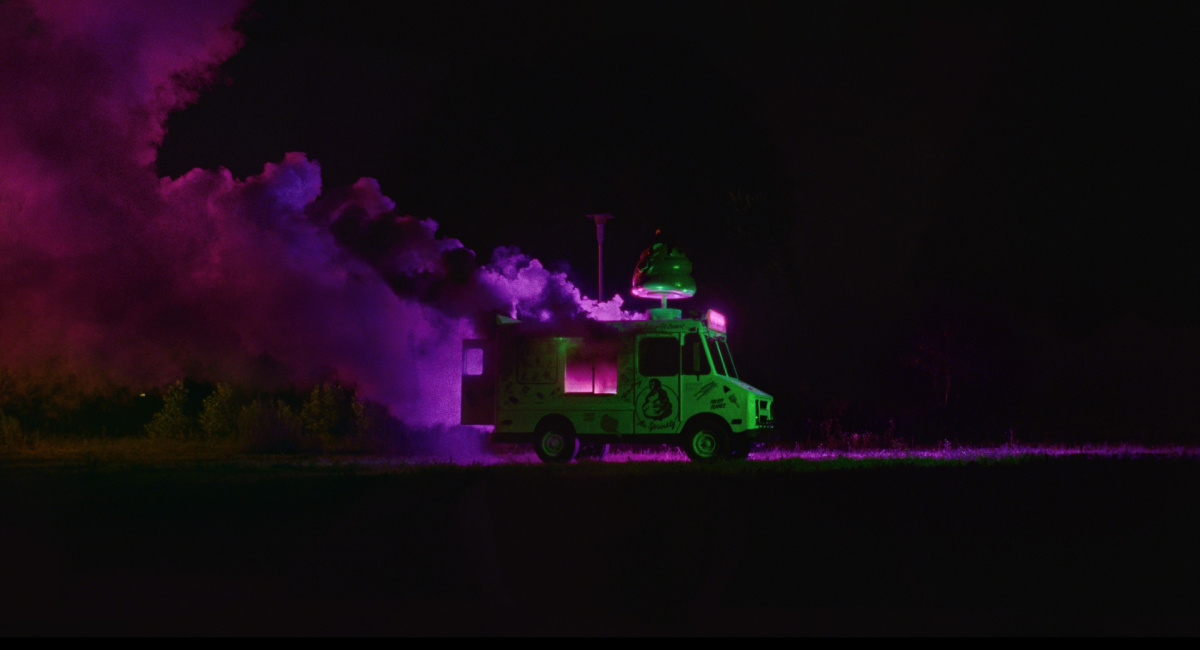
‘I Saw the TV Glow’. Photo: A24.
Other Justice Smith Movies:
Buy Justice Smith Movies on Amazon
Content Source: www.moviefone.com

